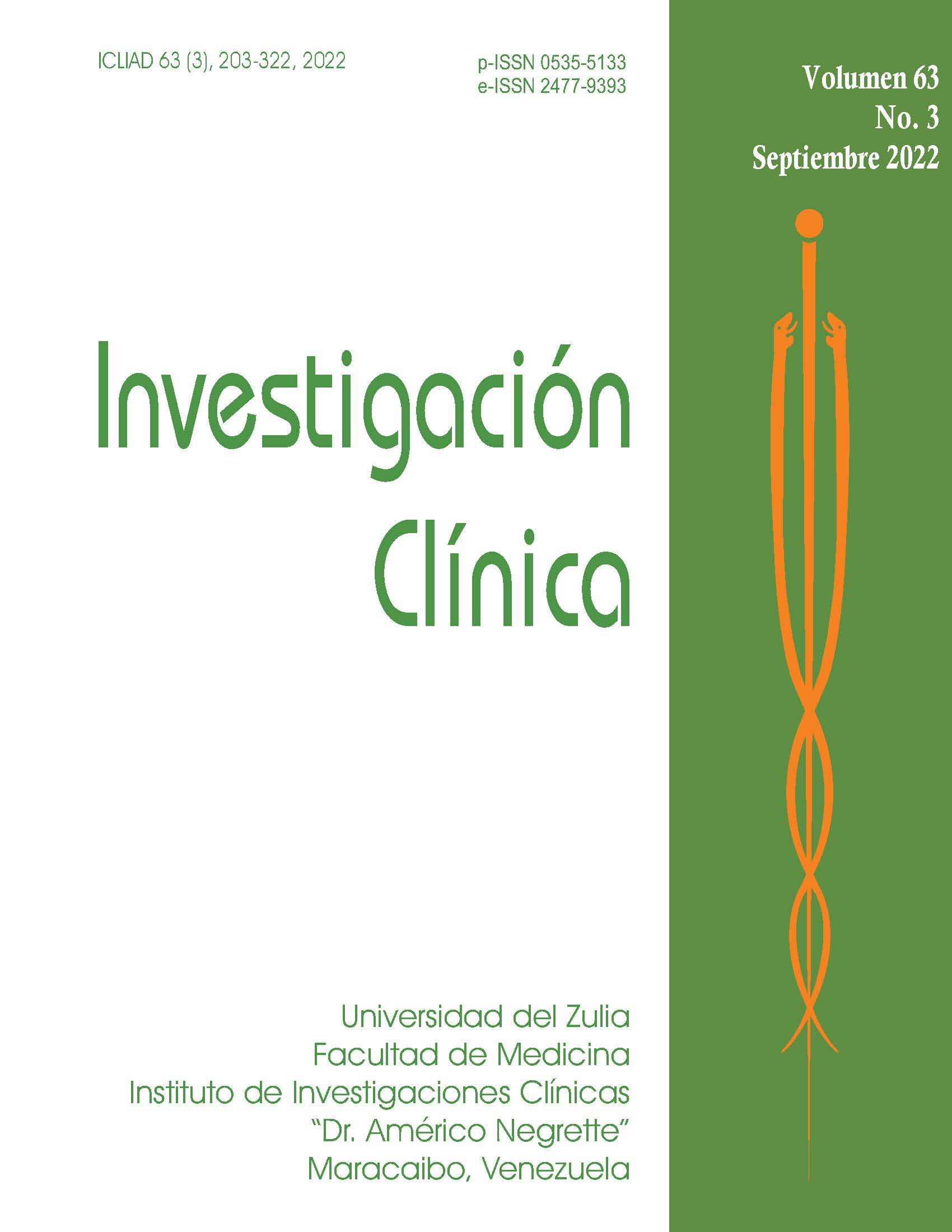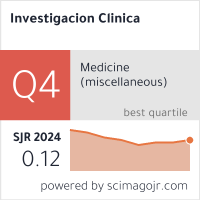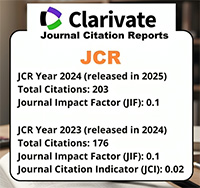Role and mechanism of miR-548-3p/ DAG1 in the occurrence and malignant transformation of laryngeal carcinoma.
Papel y mecanismo de miR-548-3p/DAG1 en la aparición y transformación maligna del carcinoma de laringe.
Abstract
The AMC-HN-8 cell line and the primary human laryngeal epithelial cell lines were utilized in this work to explore the molecular mechanism of miR-548-3p regulating the gene DAG1 to induce the occurrence and malignant transformation of laryngeal carcinoma. Non-coding RNA miR-548-3p overexpression plasmid, interference plasmid and blank plasmid were constructed, and the plasmids were transfected into AMC-HN-8 cells, respectively. Meanwhile, a non-transfected plasmid group and a human laryngeal epithelial primary cell group were set up. Five groups of cells were named as NC (Normal control), Model, Ov-miR-548-3p, Sh-miR-548-3p and Blank-plasmid group. The luciferase reporter experiment was used to analyze the regulation characteristics of hsa-miR-548-3p on dystrophin-associated glycoprotein 1 (DAG1). Immunofluorescence was used to analyze the relative expression characteristics of the protein DAG1. The cell cloning experiment was used to analyze the proliferation characteristics of AMC-HN-8. The scratch healing test was used to analyze the migration ability of AMC-HN-8. The transwell test was used to analyze the invasion ability of AMC-HN-8. The RT-PCR was used to analyze the expression level of miR-548-3p. Western blot experiments were used to analyze the expression of protein DAG1, laminin α2 (LAMA2) and utrophin (UTRN). The luciferase report experiment and immunofluorescence test found that the expression of DAG1 and miR-548-3p are positively correlated. Cell cloning, scratching and migration experiments identified that the activity of laryngeal cancer cells was positively correlated with the expression of DAG1. The results of Western blot analysis further strengthened the above conclusions. Through carrying out research on the cellular levels, our work has demonstrated that miR-548-3p regulated the content of protein DAG1, and then further induced malignant transformation of laryngeal carcinoma.
Downloads
References
Alsahafi E, Begg K, Amelio I, Raulf N, Lucarelli P, Sauter T, Tavassoli M. Clinical update on head and neck cancer: molecular biology and ongoing challenges. Cell Death Dis 2019;10(8):540.
Hellquist H, French CA, Bishop JA, Coca-Pelaz A, Propst EJ, Paiva Correia A, Ngan BY, Grant R, Cipriani NA, Vokes D, Henrique R, Pardal F, Vizcaino JR, Rinaldo A, Ferlito A. NUT midline carcinoma of the larynx: an international series and review of the literature. Histopathology 2017;70(6):861-868.
Acero Brand FZ, Suter N, Adam JP, Faulques B, Maietta A, Soulières D, Blais N. Severe immune mucositis and esophagitis in metastatic squamous carcinoma of the larynx associated with pembrolizumab. J Immunother Cancer 2018;6(1):22.
Dai Y, Liang S, Dong X, Zhao Y, Ren H, Guan Y, Yin H, Li C, Chen L, Cui L, Banerjee S. Whole exome sequencing identified a novel DAG1 mutation in a patient with rare, mild and late age of onset muscular dystrophy-dystroglycanopathy. J Cell Mol Med 2019;23(2):811-818.
Sciandra F, Scicchitano BM, Signorino G, Bigotti MG, Tavazzi B, Lombardi F, Bozzi M, Sica G, Giardina B, Blaess S, Brancaccio A. Evaluation of the effect of a floxed Neo cassette within the dystroglycan (Dag1) gene. BMC Res Notes 2017;10(1):601.
Pathak HB, Zhou Y, Sethi G, Hirst J, Schilder RJ, Golemis EA, Godwin AK. A Synthetic lethality screen using a focused siRNA library to identify sensitizers to dasatinib therapy for the treatment of epithelial ovarian cancer. PLoS One 2015;10(12):e0144126.
Liang T, Guo L, Liu C. Genome-wide analysis of mir-548 gene family reveals evolutionary and functional implications. J Biomed Biotechnol 2012;2012:679563.
Luo Z, Li D, Luo X, Li L, Gu S, Yu L, Yuan- zheng Ma. Decreased expression of miR- 548c-3p in osteosarcoma contributes to cell proliferation via targeting ITGAV. Cancer Biother Radiopharm 2016;31(5):153-158.
Rehbein G, Schmidt B, Fleischhacker M. Extracellular microRNAs in bronchoalveolar lavage samples from patients with lung diseases as predictors for lung cancer. Clin Chim Acta 2015;450:78-82.
Lorrai R, Gandolfi F, Boccaccini A, Ruta V, Possenti M, Tramontano A, Costantino P, Lepore R, Vittorioso P. Genome-wide RNA- seq analysis indicates that the DAG1 transcription factor promotes hypocotyl elongation acting on ABA, ethylene and auxin signaling. Sci Rep 2018;8(1):15895.
Ju Y, Wu X, Wang H, Li B, Long Q, Zhang D, Chen H, Xiao N, Li F, Zhang S, Yang S. Genomic landscape of head and neck squamous cell carcinoma across different anatomic sites in Chinese population. Front Genet 2021;12:680699.
He G, Pang R, Han J, Jia J, Ding Z, Bi W, Yu J, Chen L, Zhang J, Sun Y. TINCR inhibits the proliferation and invasion of laryngeal squamous cell carcinoma by regulating miR-210/BTG2. BMC Cancer 2021;21(1):753.
Chen Z, Zhang C, Chen J, Wang D, Tu J, Van Waes C, Saba NF, Chen ZG, Chen Z. The proteomic landscape of growth factor signaling networks associated with FAT1 mutations in head and neck cancers. Cancer Res 2021;81(17):4402-4416.
Bahig H, Lapointe A, Bedwani S, de Guise J, Lambert L, Filion E, Roberge D, Létourneau-Guillon L, Blais D, Ng SP, Nguyen-Tan PF. Dual-energy computed tomography for prediction of loco-regional recurrence after radiotherapy in larynx and hypopharynx squamous cell carcinoma. Eur J Radiol 2019;110:1-6.
Hughes RT, Beuerlein WJ, O’Neill SS, Porosnicu M, Lycan TW, Waltonen JD, Frizzell BA, Greven KM. Human papillomavirus-associated squamous cell carcinoma of the larynx or hypopharynx: Clinical outcomes and implications for laryngeal preservation. Oral Oncol 2019;98:20-27.
Garajei A, Parvin M, Mohammadi H, Allameh A, Hamidavi A, Sadeghi M, Emami A, Brand S. Evaluation of the expression of miR-486-3p, miR-548-3p, miR-561-5p and miR-509-5p in tumor biopsies of patients with oral squamous cell carcinoma. Pathogens 2022;11(2):211.
Perez-Ordoñez B. Neuroendocrine carcinomas of the larynx and head and neck: challenges in classification and grading. Head Neck Pathol 2018;12(1):1-8.
Reinhard JR, Lin S, McKee KK, Meinen S, Crosson SC, Sury M, Hobbs S, Maier G, Yurchenco PD, Rüegg MA. Linker proteins restore basement membrane and correct LAMA2-related muscular dystrophy in mice. Sci Transl Med 2017;9(396).
Leibovitz Z, Mandel H, Falik-Zaccai TC, Ben Harouch S, Savitzki D, Krajden- Haratz K, Gindes L, Tamarkin M, Lev D, Dobyns WB, Lerman-Sagie T. Walker- Warburg syndrome and tectocerebellar dysraphia: A novel association caused by a homozygous DAG1 mutation. Eur J Paediatr Neurol 2018;22(3):525-531.
Harris E, McEntagart M, Topf A, Lochmüller H, Bushby K, Sewry C, Straub V. Clinical and neuroimaging findings in two brothers with limb girdle muscular dystrophy due to LAMA2 mutations. Neuromuscul Disord 2017;27(2):170-174.
Sarkozy A, Foley AR, Zambon AA, Bönne- mann CG, Muntoni F. LAMA2-related dystrophies: clinical phenotypes, disease bio-markers, and clinical trial readiness. Front Mol Neurosci 2020;13:123.
Zhou S, Ouyang W, Zhang X, Liao L, Pi X, Yang R, Mei B, Xu H, Xiang S, Li J. UTRN inhibits melanoma growth by suppressing p38 and JNK/c-Jun signaling pathways. Cancer Cell Int 2021;21(1):88.
Wood CL, Suchacki KJ, van ‘t Hof R, Cawthorn WP, Dillon S, Straub V, Wong SC, Ahmed SF, Farquharson C. A comparison of the bone and growth phenotype of mdx, mdx:Cmah(-/-) and mdx:Utrn (+/-) murine models with the C57BL/10 wildtype mouse. Dis Model Mech 2020;13(2).





















